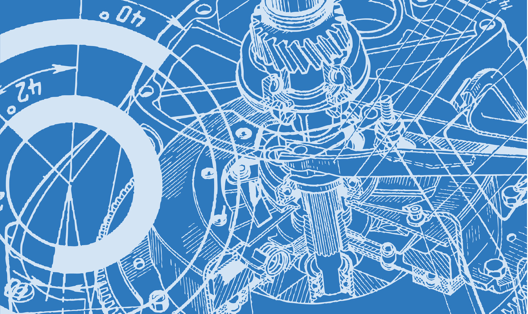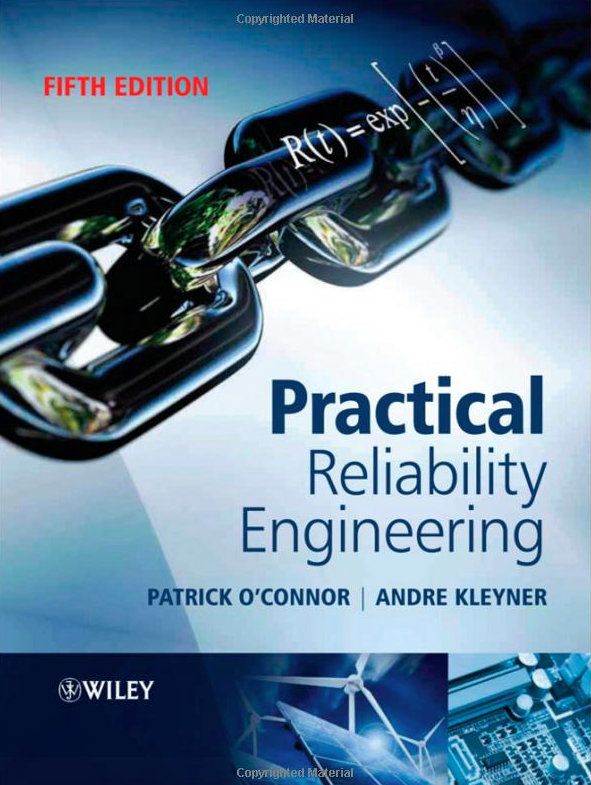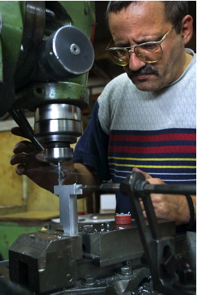
Certificate Courses (12)
C303: Computerised Maintenance Management Systems (CMMS)
|
|
 |
 |
Introduction
In today’s complex industrial environments, the efficiency and reliability of maintenance management are crucial for the longevity and productivity of equipment. Computerised Maintenance Management Systems (CMMS) are essential tools that help organisations effectively manage their maintenance operations. These systems capture and store maintenance plans as organisational knowledge, enabling multiple users to access and collaboratively enhance these plans. CMMS act as a comprehensive library, archiving previous work and allowing for the continuous improvement of maintenance plans over time. They enable organisations to meticulously track pending and completed tasks and enhance decision-making processes with reporting functionality and data analytics.
Expertise Powered by EAMS Africa
So that our learners receive training that is not only grounded in industry best practices, but also at the cutting edge of technological advancements, Terotechnica has formed a strategic partnership with EAMS Africa. This course is expertly designed, maintained, and delivered by EAMS Africa, a leader in Enterprise Asset Management Systems. With years of experience, EAMS Africa excels in the architecture and functionality of CMMS databases, ensuring that learners gain both theoretical insights and practical skills.
CMMS Platform: Fracttal
Training will be conducted on Fracttal, a CMMS known for its powerful and modern functionality, including predictive maintenance, AI integration, and smart job cards. This platform exemplifies the latest in maintenance technology, offering tools that significantly enhance maintenance efficiency and effectiveness and giving learners exposure to the type of functionality that will be used in the future.
Transferable Skills and Knowledge
Upon completion of this course, participants will not only become proficient in using Fracttal, but will also gain a deep understanding of CMMS structures and functions that can be applied to all other CMMSs. This universal applicability ensures that learners are equipped to handle various CMMS platforms, enhancing their versatility and value in the field of Maintenance Management.
Course Duration
This course is conducted over 5 days - 8 hours per day
Course Prerequisite
Participants should have completed the C301 Maintenance Planning course before registering for this course.
|
Course Content ● Section 1 - From Problem to Work Order ● Section 2 - Scoping and Planning ● Section 3 - Resource Coordination ● Section 4 - Strategic Activity Scheduling ● Section 5 - Tracking Plan Execution ● Section 6 - Task Feedback ● Section 7 - Refining Maintenance Feedback Loops ● Section 8 - Advancing Master Data Management
|
 |
Who Should Attend
The course is designed for:
● Aspiring maintenance planners seeking foundational and advanced knowledge in CMMSs.
● Maintenance supervisors and engineers who are tasked with overseeing maintenance operations.
● Asset managers looking to integrate and leverage CMMS for enhanced asset management.
Credits 16*, level 5**
|
* The course comprises 80 hours of study, of which 40 hours are in class, with a further 16 hours of private study, and 24 hours for an assignment. **Occupational Certificate level |
Prerequisites: Completion of C301: Maintenance Planning |
C301X: Maintenance Planning Fundamentals
 If one compares maintenance to the human body, maintenance planning provides the thinking capacity that determines what work to do, and when, while the artisans provide the doing capacity of the hands and feet, and supervisors provide the controlling function of the brain, steering the hands and feet.
If one compares maintenance to the human body, maintenance planning provides the thinking capacity that determines what work to do, and when, while the artisans provide the doing capacity of the hands and feet, and supervisors provide the controlling function of the brain, steering the hands and feet.
Because nothing in life takes place before it has been thought through, no worthwhile maintenance task can take place before planning (naturally including any planning done by supervisors and artisans).
No worthwhile maintenance task can take place without good planning
 Maintenance planning fulfils a crucial role in the organisation. Maintenance success is absolutely dependent on good scheduling of maintenance work, proper task planning, and timely procurement of parts and materials. The Maintenance Planner plays a critical role in achieving this essential outcome.
Maintenance planning fulfils a crucial role in the organisation. Maintenance success is absolutely dependent on good scheduling of maintenance work, proper task planning, and timely procurement of parts and materials. The Maintenance Planner plays a critical role in achieving this essential outcome.
The C301 Maintenance Planning course thus has as its purpose to prepare Maintenance Planners for this role. This includes training in the various scheduling techniques, such as simple time slot scheduling, detailed network scheduling of maintenance shutdowns and projects, as well as batch workshop scheduling. It also includes training in task planning methods, procurement methods, use of maintenance systems, task flow optimisation, maintenance information analysis, and the support of maintenance management through well defined and formatted reporting.
This course, which is a shortened version of the C301 Maintenance Planning course, leaves out the content on Systems (day 4 of C301) and Management Support (day 5 of C301). It thus addresses the most critical planning skills, i.e. scheduling, task planning and procurement. Some organisations may perhaps feel that their planners need not understand the deeper systems issues, and may also not require their planners to support the business' managers with pointed information. They may thus prefer this simplified course to the more comprehensive training.
The course is extremely hands-on, allowing candidates to practice the skills learnt through practical application during four to five group assignments per day. This is augmented by an application project following course completion.
Course Content
|
Module 1
|
Module 2
|
Module 3
|
|
Credits 10*, level 5** * The course comprises 50 hours of study, of which 24 hours are in class, with a further 10 hours of private study, and 16 hours for the assignment. **Occupational Certificate level |
|
Who Should Attend
The course is intended for maintenance planners, maintenance supervisors, artisans and those who manage them.
The reason for including the wording 'those who manages them' in the sentence above is that we often find that some class of Asset Management / Maintenance people are sent on courses without the person managing them being able to activate their newly acquired knowledge after the course. What rather happens is that they are managed exactly in the same way as before the course, which often leads to the course not having the required effect.
Artisans are also specifically added above as the effect of maintenance planning and the information fed back to the Computerised Maintenance System is to a large extent dependent on their knowledgeability of, and support to, the Maintenance Planning function.
C904: RCM ProAktiv: Advanced Reliability Centred Maintenance
Excellence in RCM practice: RCM ProAktiv

The idea of RCM was conceived in the late sixties of the previous century by the airline industry to achieve acceptable levels of maintenance for aircraft. This was followed by a carry-over of these concepts first to the military and then to general industry (circa 1980).
RCM has been practiced widely since then, but especially so from the early nineties. It has now become necessary to take RCM practice to a new, advanced level.
RCM ProAktiv does exactly this by developing the original RCM methodology both in width and depth of application. In the present course known RCM concepts are thus revisited, expanded, and explored comprehensively.
This course is based on the book RCM ProAktiv: a proactive approach to Reliability Centered Maintenance - a complete view, by our principal, Dr Jasper L. Coetzee. Dr Coetzee is also lecturing this particular course.
Because of the advanced nature of the course, candidates that want to enrol need to either have an engineering degree (B.Eng., BSc (Eng) or B.Tech), or alternaltively have successfully completed the following two courses as a prerequisite for this course:
- C702: Reliability Engineering in Asset Management
- C903: RCM Facilitation and Analysis
This is to ensure that participants will adequately cope with the course content. Exceptions to this rule is possible, but will have to be suitably motivated.
This course thus builds on the foundation already established in our C702 and C903 courses. Apart from shortly revisiting the Reliability and RCM foundations, the student should be in a position to quickly grasp and use the advanced concepts as taught in this course.
Course Content
|
Module 1 – Essential background
|
|
Module 2 – A foundation for applying RCM ProAktiv successfully
|
|
Module 3 – Finding the failure modes that will lead to an excellent maintenance plan
|
|
Module 4 – An advanced view of the Task Selection process
|
|
Module 5 – Assembling and implementing the RCM ProAktiv Maintenance Plan
|
|
|
Who Should Attend
The C904 course is recommended for Reliability Engineers, Maintenance Engineers, Asset Managers, and RCM Facilitators that intend enriching their practice of RCM to a full RCM ProAktiv level.
Important note: Laptop computer required – refer to terms and conditions on Course Registration form, and footnote on the Course Listing.
 |
Credits 20*, level 6** * The course comprises 100 hours of study, of which 40 hours are in class, with a further 60 hours for an assignment. **Higher Diploma level |
|
Textbook Provided
|
C903: RCM Facilitation and Analysis
RCM is the best tool available to decide what maintenance to do to your equipment
 RCM = Reliability Centred Maintenance. The maintenance of physical assets needs to be scientifically determined based on reliability considerations. Reliability stands at the centre. This is the principle that improved the safety of modern jet liners and many industries to the level which improves the quality of our lives greatly.
RCM = Reliability Centred Maintenance. The maintenance of physical assets needs to be scientifically determined based on reliability considerations. Reliability stands at the centre. This is the principle that improved the safety of modern jet liners and many industries to the level which improves the quality of our lives greatly.
Modern production equipment design is complex. It thus needs to be maintained scientifically. So how do you decide what maintenance to do on your critical production equipment? By deciding which failures are the ones that matter and then designing maintenance tasks for them.
The maintenance suggested by the manufacturer of your equipment often leads to one of two things. In some cases the manufacturer's recommendations lead to over-maintaining the equipment and in other cases under-maintaining them.
The reasons for this are:
- The manufacturer does not understand your specific production circumstances.
- The manufacturer is often over-conservative in their approach to ensure that their good name is preserved. This leads to unnecessary expensive maintenance.
 Reliability Centred Maintenance (RCM) has become an industry standard. It is the tool of choice for the design and development of effective maintenance plans.
Reliability Centred Maintenance (RCM) has become an industry standard. It is the tool of choice for the design and development of effective maintenance plans.
One of the key drives behind RCM was to assure a high level of safety performance. The safety record of modern passenger airliners bears this out. Similar success has been achieved in many industries using RCM.
Courses in RCM
We present two courses in RCM: C903 and S801. They provide a good theoretical and practical base for the use of the RCM technique.
The difference between the two courses are:
- The three day short course (S801) teaches RCM as technique.
- The five day course (C903) adds two days. These two days essentially adds facilitation skills to S801.
Course Content
|
Module 1 – RCM Principles
|
|
Module 2 – Select Failure Modes
|
|
Module 3 - Select Maintenance Tasks
Workshop: |
|
Module 4 – Compile Maintenance Plan, RCM Living Programme
|
|
Module 5 – RCM Facilitation Workshop: |
|
|
Who Should Attend
The C903 course is recommended for facilitators of RCM sessions. The S801 course is meant for participants in RCM design sessions. Any person who needs to apply the RCM logic to a system or parts of a system will also benefit from any of the two courses.
Important note: Laptop computer required – refer to terms and conditions on Course Registration form, and footnote on the Course Listing.
|
Credits 16*, level 6** CPD Points: 5 * The course comprises 80 hours of study, of which 40 hours are in class, **Higher Diploma level |
|
Textbook Provided
|
C902: Leadership in Asset Management
Leadership in Asset Management presents a considerable challenge, which needs to be taken up with the necessary skills in the pocket
 The Asset Management / Maintenance function intends keeping the Physical Assets in its care in a good operational condition. Its objective is to sustain a high level of Operational Readiness (Availability, Reliability, Operability, and Qualibility), at acceptable levels of Safety, Environmental Risk, and Cost.
The Asset Management / Maintenance function intends keeping the Physical Assets in its care in a good operational condition. Its objective is to sustain a high level of Operational Readiness (Availability, Reliability, Operability, and Qualibility), at acceptable levels of Safety, Environmental Risk, and Cost.
Leadership in Asset Management involves leading the functions of Asset Management / Maintenance. It particularly keeps itself busy with achieving success through people. The objective of its companion course, C901, is to equip engineers with knowledge regarding the strategic and tactical aspects of Asset Management / Maintenance Engineering.
Even so, C901 cannot include all the necessary learning to prepare an individual to be a top class Asset Manager / Maintenance Manager. C902 fulfills that purpose. The two together produce the foundation for Asset Management Excellence and Career Progression.
Leading the Asset Management function needs considerable skill. It is much more than just managing technical results. Asset Managers need to steer the function to have the greatest effect on the output of the organisation.
To achieve this the Asset Manager should:
- Understand the Asset Management / Maintenance function and the factors causing success well.
- Be able to analyse and understand maintenance situations.
- Have a good knowledge of modern management methods.
- Understand that success comes through people.
This course aims to provide the skills, knowledge, and innovative capacity to practicing Asset Managers / Maintenance Managers to make them into successful achievers. This includes addressing and teaching them knowledge and vocational insight into issues such as:
- The profit impact of a properly run Asset / Maintenance department.
- The challenges and dilemmas inherent to maintenance today; how to manage it, understanding the ‘New Maintenance Management Paradigm’.
- Classical Management Theory as a basis for success.
- Leadership and its critical role in maintenance.
- Achieving personal mastery, so as to be enabled to lead others successfully.
- Maintenance logistics - the ‘logics’ of the maintenance organisation - its role in achieving a successful maintenance department.
- Creating and maintaining a workplace culture that fosters success.
- Managing and developing a workforce to achieve success.
Course Content
|
Module 1 – Understanding Asset
|
Module 2 – The New Asset Management Paradigm
|
Module 3 – Leadership
|
|
Module 4 – Maintenance Logistics
|
Module 5 – Culture the Binding Force
|
Module 6 – Successful People Management
|
Who Should Attend
The course is intended for Asset Managers, Maintenance Managers, Maintenance Engineers, and all others who manage the Asset Management / Maintenance function.
|
Credits 16*, level 6** CPD Points: 5 * The course comprises 80 hours of study, of which 40 hours are in class, **Higher Diploma level |
|
Textbook Provided
|
C901: Maintenance Practice for Asset Management Engineers
C702: Reliability Engineering in Asset Management
Reliable equipment produces sustainable production and safety results

Reliability is a built-in design feature of any physical asset. The designer makes decisions that influence the reliability of the machine/system in a major way. These decisions cannot be significantly changed during the operating and maintenance phase (the working life of the asset) without rebuilding the asset.
Naturally, achieving the designed-in reliability requires that the asset be maintained and operated so that failures are managed and their consequences minimised. This goes without saying, but does not change the fact that we cannot fundamentally improve the built-in reliability of the system in a major way.
 If the machine is not maintained properly, the built-in reliability of the system will be affected negatively. Although reliability cannot be fundamentally improved through maintenance, it can at least be preserved by the appropriate quality maintenance actions. This can be achieved in two ways, namely by ensuring that the right maintenance actions are taken, and that these maintenance actions are carried out diligently and in a professional manner by the maintenance staff.
If the machine is not maintained properly, the built-in reliability of the system will be affected negatively. Although reliability cannot be fundamentally improved through maintenance, it can at least be preserved by the appropriate quality maintenance actions. This can be achieved in two ways, namely by ensuring that the right maintenance actions are taken, and that these maintenance actions are carried out diligently and in a professional manner by the maintenance staff.
Asset Management / Maintenance engineers need to be the operating company's experts on the subject of reliability. They are firstly necessary to guard the reliability of operating equipment against degradation and abuse. Secondly, they should be the initiators of reliability improvement drives, leading to higher operating capability and thus profit.
Course Content
|
Module 1
|
Module 2
|
Module 3
|
|
|
Module 4
|
Module 5 (Day 5)
|
Who Should Attend
The course is intended for Asset Management Engineers, Maintenance Reliability Engineers, and Maintenance Engineers.
Important note: Laptop computer required – refer to terms and conditions on Course Registration form, and footnote on the Course Listing.

|
Credits 16*, level 6**
* The course comprises 80 hours of study, of which 40 hours are in class, with a further 40 hours to prepare for tests and the final examination. **Higher Diploma level.
|
|
Textbook Provided |
C501: Maintenance Shutdown and Project Management
'Good maintenance project managers are both scarce and worth their weight in gold'
 Maintenance abounds with projects, originating from the objective of high plant uptime. These include a seemingly perpetual stream of small and not so small improvement projects requested by production, as well as those deemed necessary by observation of failure trends.
Maintenance abounds with projects, originating from the objective of high plant uptime. These include a seemingly perpetual stream of small and not so small improvement projects requested by production, as well as those deemed necessary by observation of failure trends.
Furthermore, the nature of the equipment being maintained often necessitates grouping preventive maintenance actions into shutdown occasions, varying from a weekly maintenance shift to extended maintenance occasions, ranging from a few days to a week or more. As lost production time is expensive, these events need to be managed closely using project management principles. It is consequently necessary to have a sound knowledge of the subject.
 Short shutdown turnaround times are vital to profitability
Short shutdown turnaround times are vital to profitability
Project and Shutdown Management embraces a variety of disciplines, including detailed project scheduling, task planning and control, purchasing control, cost control, and the ability to coordinate actions under highly pressurised circumstances.
The course in Shutdown and Project Management endeavours to provide the necessary theoretical foundation to equip maintenance people with the necessary skills to facilitate successful Maintenance Shutdowns and Project Management occasions. It is presented by a seasoned maintenance manager with extensive experience in this field.
 The course is presented in an alternating fashion, with hands-on practical sessions in the use of Microsoft Project, to facilitate project planning and control, being interspersed between successive project management foundational sessions. Course documentation includes a comprehensive course file, and the book 'Microsoft Project 2010 Step by Step' (or the older ‘Microsoft Project 2007 Step by Step’ until our stocks are depleted), by Carl S. Chatfield and Timothy D. Johnson, Microsoft Press.
The course is presented in an alternating fashion, with hands-on practical sessions in the use of Microsoft Project, to facilitate project planning and control, being interspersed between successive project management foundational sessions. Course documentation includes a comprehensive course file, and the book 'Microsoft Project 2010 Step by Step' (or the older ‘Microsoft Project 2007 Step by Step’ until our stocks are depleted), by Carl S. Chatfield and Timothy D. Johnson, Microsoft Press.
Course Content
|
Module 1
|
Module 2
|
Module 3
|
|
Module 4
|
Module 5
|
Note: Hands-on work is based on the Microsoft Press book 'Microsoft Project 2010 Step by Step' (or the 2007 book until stock is depleted) by Carl S. Chatfield and Timothy D. Johnson, of which each student receives a copy.
Who Should Attend
The C501 course is primarily intended for maintenance managers (to manage maintenance shutdowns and maintenance projects), and secondly for maintenance planners (who need to plan shutdowns and maintenance projects).
Important note: Laptop computer required – refer to terms and conditions on Course Registration form, and footnote on the Course Listing.
|
Credits 16*, level 5** CPD Points: 5 * The course comprises 80 hours of study, of which 40 hours are in class, with a further 40 hours for the assignment. **Occupational Certificate level |
C302: Advanced Maintenance Planning
While the Maintenance Planning course (C301) fundamentally prepares a planner for the task of planning, more is required to ensure a high level of output from the planning function. This has led to many requests for an advanced course.
Maintenance planning is the function that ensures that the correct maintenance actions are performed to the right equipment at the right time, and having all necessary preparation and resources in place. It is furthermore arguably the function that ensures that all maintenance actions can be completed correctly and efficiently.

Make sure that your artisans are used efficiently by giving them tasks that are "ready to go" **
 Maintenance Planning is becoming more and more important to secure the success of maintenance actions. The theory and tools of maintenance planning are also becoming more sophisticated.
Maintenance Planning is becoming more and more important to secure the success of maintenance actions. The theory and tools of maintenance planning are also becoming more sophisticated.
The Maintenance Planning course (C301) prepares planners to understand the first part of the planning process, namely Work Order Planning. But it does not address the process of preparing the Weekly Schedule, and it does not equip the planner with advanced capabilities, such as Task Design, and Work Measurement. These are provided in this advanced course. This course:
1. Completes the tuition of the planner regarding the full planning function.
2. Prepares he planner for taking the role of senior or head planner after gaining enough experience.
This course (C302) is ideally aimed at the further development of maintenance planners after they successfully completed the course in Maintenance Planning and had time to implement and integrate that knowledge in practice.
Who Should Attend
The course is intended for maintenance planners and those who manage them. Having attended and passed the C301 course is prerequisite for enolling for this course.
** Tasks that are "ready to go" are ones for which all the necessary resources (men, materials, permits, instructions, drawings, manuals, etc.) are available for the artisan to complete the task without delays.
Course Content
|
Module 1
|
Module 2
|
Module 3
|
|
Module 4
|
Module 5
|
|
Credits 16*, level 5** * The course comprises 80 hours of study, of which 40 hours are in class, with a further 16 hours of private study, and 24 hours for an assignment. **Occupational Certificate level |
Prerequisites: Completion of C301: Maintenance Planning |
C301: Maintenance Planning
If one compares maintenance to the human body, maintenance planning provides the thinking capacity that determines what work to do, and when, while the artisans provide the doing capacity of the hands and feet, and supervisors provide the controlling function of the brain, steering the hands and feet.
 Because nothing in life takes place before it has been thought through, no worthwhile maintenance task can take place before planning (naturally including any planning done by supervisors and artisans).
Because nothing in life takes place before it has been thought through, no worthwhile maintenance task can take place before planning (naturally including any planning done by supervisors and artisans).
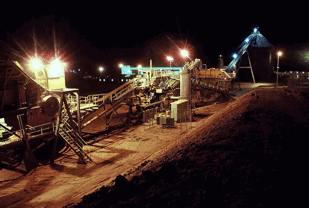 No worthwhile maintenance task can take place without good planning
No worthwhile maintenance task can take place without good planning
Maintenance planning fulfils a crucial role in the organisation. Maintenance success is absolutely dependent on good scheduling of maintenance work, proper task planning, and timely procurement of parts and materials. The Maintenance Planner plays a critical role in achieving this essential outcome.
The course thus has as its purpose to prepare Maintenance Planners for this role. This includes training in the various scheduling techniques, such as simple time slot scheduling, detailed network scheduling of maintenance shutdowns and projects, as well as batch workshop scheduling. It also includes training in task planning methods, procurement methods, use of maintenance systems, task flow optimisation, maintenance information analysis, and the support of maintenance management through well defined and formatted reporting.
The course is extremely hands-on, allowing candidates to practice the skills learnt through practical application during four to five group assignments per day. This is augmented by an application project following course completion.
Course Content
|
Module 1
|
Module 2
|
Module 3
|
|
Module 4
|
Module 5
|
|
Credits 16*, level 5** * The course comprises 80 hours of study, of which 40 hours are in class, with a further 16 hours of private study, and 24 hours for the assignment. **Occupational Certificate level |
|
Who Should Attend
The course is intended for maintenance planners, maintenance supervisors, artisans and those who manage them.
The reason for including the wording 'those who manages them' in the sentence above is that we often find that some class of Asset Management / Maintenance people are sent on courses without the person managing them being able to activate their newly acquired knowledge after the course. What rather happens is that they are managed exactly in the same way as before the course, which often leads to the course not having the required effect.
Artisans are also specifically added above as the effect of maintenance planning and the information fed back to the Computerised Maintenance System is to a large extent dependent on their knowledgeability of, and support to, the Maintenance Planning function.
More...
C201: Asset Management for Maintenance Supervisors
The Maintenance Supervisor needs to be able to get results through people
 It is certainly so that the technology, that the maintenance function maintains, needs a sophisticated approach to maintenance. However, there is a growing gap between this need and maintenance’s ability to fulfil it.
It is certainly so that the technology, that the maintenance function maintains, needs a sophisticated approach to maintenance. However, there is a growing gap between this need and maintenance’s ability to fulfil it.
The person that plays a critical role in this is the maintenance supervisor. He/she must firstly understand and embrace modern maintenance technologies (such as Condition Based Maintenance, Laser Alignment, and Tribological Practice), methodologies (such as Reliability Centred Maintenance), and Systems.
Secondly, the role of maintenance workers implementing and effectively using these technologies, methodologies, and systems is critical to the success of the organisation. And the only person that can ensure that this does occur is the Maintenance Supervisor.
He/she should be able to get the best (sometimes even the almost impossible) from maintenance artisans and workers to ensure that this gap is closed properly.
 The problem is that maintenance supervisors are mostly appointed from amongst the artisan fraternity and have to supervise on the little knowledge regarding supervision that he/she gained from his/her previous supervisor(s). Although this often teaches one the negatives of wrong supervision and some of the positives, it is simply not enough to produce the supervisor that will get quality maintenance output through other people.
The problem is that maintenance supervisors are mostly appointed from amongst the artisan fraternity and have to supervise on the little knowledge regarding supervision that he/she gained from his/her previous supervisor(s). Although this often teaches one the negatives of wrong supervision and some of the positives, it is simply not enough to produce the supervisor that will get quality maintenance output through other people.
This course above all focusses on three aspects of supervision, namely to be open for new learning, getting results through people, and manage the facilities/resources to his/her disposal effectively. Its aim is to effectively motivate and equip the maintenance supervisor for his/her role in ensuring maintenance success.
Course Content
|
Module 1
|
|
Module 2
|
|
|
|
Module 3
|
Module 4
|
|||
|
Module 5
|
Who should attend
The course is intended for maintenance supervisors, maintenance charge hands, and artisans who have to perform supervisory relief.
|
|
|
Credits 12*, level 5** * The course comprises 60 hours of study of which 32 hours are in class, with a further 12 hours of private study, and 16 hours for an assignment. **Occupational Certificate level. |
|
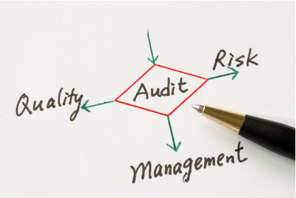 |
C101: Asset Management for Artisans
This course intends to assist artisans in getting into a habit of first thinking before acting
The maintenance artisan is the direct executional arm of the Asset Management / Maintenance department. But not only that; this person is also the one who has to perform the direct liaison with the production operator/miner, has to do the final planning, and has to think through the exact method of performing the task at hand. He/she thus not only needs to be trained well technically, but must also understand the principles involved in maintaining equipment proactively and manage him-/herself well.

Artisan training typically teaches artisans how to perform the tasks of the specific Trade - and that is correct. However, artisans need specific training regarding their role in the Asset Management / Maintenance world.
- Firstly, some maintenance-critical knowledge is missing from the 'toolbox' of the typical artisan.
- Secondly, the typical artisan is not equipped with the personal planning and management skills to manage maintenance situations effectively.
- Thirdly, maintenance artisans have a wrong attitude towards paperwork, which is very detrimental to the maintenance outcome.
- Fourthly, maintenance artisans tend to lack activity potential due to motivational problems and not having the 'tools' to get more from other people, such as their production counterparts.
This course is aimed at putting the maintenance function in perspective for the artisan, provide the necessary skills, emphasize good relations with the production function, underline the importance of proper communication, and promote a proactive and positive attitude.
Course Content
|
Day 1 – General Maintenance Principles
|
|
Day 2 – Involvement and Techniques
|
Appendices The course material include
|
|
Who should attend
The course is intended for maintenance artisans and those who manage them.
The reason for including the wording 'those who manages them' in the sentence above is that we often find that some class of Asset Management / Maintenance people are sent on courses without the person managing them being able to activate their newly acquired knowledge after the course. What rather happens is that they are managed exactly in the same way as before the course, which often leads to the course not having the required effect.
|
|
|
Credits 4*, level 4** * The course comprises 20 hours of study of which 16 hours are in class, with a further 4 hours of private study. **Occupational Certificate level. |
|
|
Ball and Roller Bearing Maintenance


